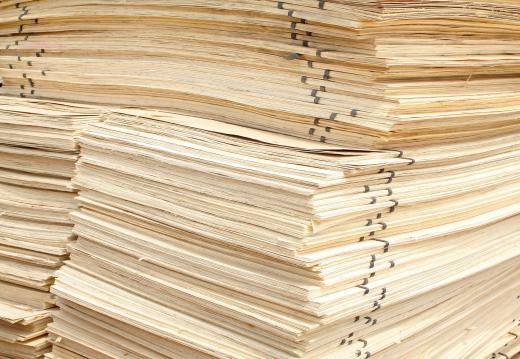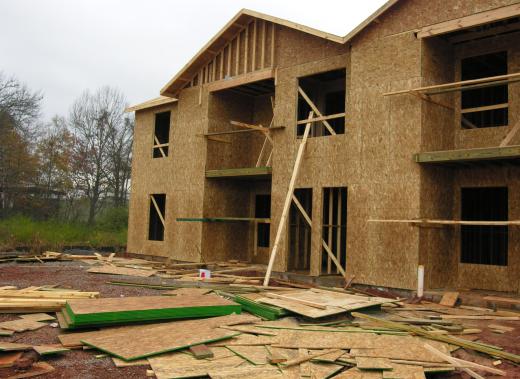Oriented strand board (OSB) is an engineered wood panel product made of resin-bonded wood strands or flakes. The wood strands are precisely cut and oriented in order to produce a wood panel with uniform strength and density. Like plywood, it is widely suitable for use as a structural board, and is commonly used in roof and wall sheathing, in subfloors, and increasingly in furniture manufacturing.
OSB is made of long wood strands, and should not be confused with medium density fiberboard (MDF), which is made of fine wood fibers, or particleboard, which is made of sawdust. All three of these engineered wood products are made by binding wood particles with a resin or other adhesive, but each has different properties and applications. It should also not be confused with plywood, which is made of broad, flat panels of wood glued together in layers.

OSB is manufactured by combining wood and resin coating under high heat and pressure. Whole logs are soaked, stripped of bark, and cut into strands that are typically up to six inches long and one inch wide. The strips are then dried, mixed with resin and a small amount of wax, and formed into layers. The internal layers of an OSB panel are oriented at 90 degrees. The external layers are oriented in a particular direction; the finished panel will be stronger in that direction. The mass is then fed into a press, where the wood and resin combine under extreme heat and pressure. The panels are cut to size, stamped with usage and quality-assurance information, and edge-coated.

Coating the edges helps to seal the panels against moisture. Since OSB panels are often exposed to the elements during a home's construction, builders should use panels that are rated "Exposure 1" or "External" to ensure they were made using a water-resistant resin. Builders should also be careful not to leave boards that have been cut where water can get to them. Cutting a panel exposes new edges that have not been coated and can swell up if they get wet.
Manufacturers tout OSB as an environmentally friendly construction alternative. The resins used in to make it produce very little emissions. It can be manufactured from a wider variety of tree species than plywood, including faster-growing species. It can also be made from younger trees and uses more of a tree's wood. As a result, the forests used to produce OSB can be more readily renewed than those used to produce plywood. Wood building products generally require less energy to manufacture than non-wood products. Oriented strand board can and should be recycled.
